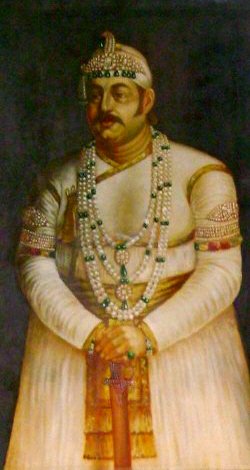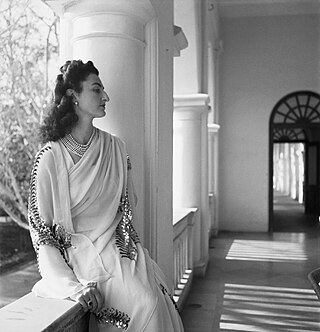 | |
| Type | Tea biscuit |
|---|---|
| Course | Snack |
| Place of origin | India |
| Region or state | Hyderabad |
| Associated cuisine | Indian |
| Main ingredients | Milk, flour,cardamom, salt, sugar |
Osmania biscuit is a popular tea biscuit from Hyderabad, India.
 | |
| Type | Tea biscuit |
|---|---|
| Course | Snack |
| Place of origin | India |
| Region or state | Hyderabad |
| Associated cuisine | Indian |
| Main ingredients | Milk, flour,cardamom, salt, sugar |
Osmania biscuit is a popular tea biscuit from Hyderabad, India.

Osmania Biscuits trace their origins to the royal kitchens of the last Nizam of Hyderabad, Mir Osman Ali Khan, who sought a snack with a perfect blend of sweetness and saltiness. Historical documents substantiate that Osmania Biscuits were initially introduced during the Nizam's reign, highlighting their aristocratic beginnings.
Two
The development of Osmania Biscuits was significantly influenced by Turkish and Persian baking customs, contributing to their distinctive flavor profile and texture. This historical connection adds depth to their culinary heritage, reflecting a synthesis of cultures in the creation of this iconic treat.
These biscuits have become synonymous with the cultural identity of Hyderabad, particularly in areas like Charminar and Old Hyderabad. Osmania Biscuits have become an integral part of the local culinary scene, often paired with the renowned Irani chai. [1]
Beyond the boundaries of Hyderabad, variations of Osmania Biscuits can be found in Tamil Nadu, with the name 'butter biscuit' of Chennai bearing a striking resemblance. Also 'ooty biscuits' found in Ooty is similar made. But both have no cultural touch with each other as each of the types originated around similar historical period. This widespread popularity underscores the enduring appeal of Osmania Biscuits, not just within the city but also as a cultural delicacy recognized throughout India and beyond. [2] [3]

Osmania University is a collegiate public state university located in Hyderabad, Telangana, India. Mir Osman Ali Khan, the 7th Nizam of Hyderabad, issued a firman calling for its creation on 29 August 1917. It is the third oldest university in southern India, and the first to be established in the erstwhile Kingdom of Hyderabad. It was the first Indian university to use Urdu as a language of instruction, although with English as a compulsory subject. As of 2012, the university hosts 3,700 international students from more than 80 nations.

Hyderabad State or Hyderabad Deccan was a kingdom, country, and princely state in the Deccan with its capital at the city of Hyderabad. It is now divided into the state of Telangana, the Kalyana-Karnataka region of Karnataka, and the Marathwada region of Maharashtra in present-day India, which annexed it in 1948.

Nizam of Hyderabad was the title of the ruler of Hyderabad State. Nizam is a shortened form of Niẓām ul-Mulk, which means Administrator of the Realm, and was the title bestowed upon Asaf Jah I when he was appointed Viceroy of the Deccan by the Mughal Emperor Farrukhsiyar. In addition to being the Mughal Viceroy (Naib) of the Deccan, Asaf Jah I was also the premier courtier of the Mughal Empire until 1724, when he established the independent monarchy of Hyderabad and adopted the title "Nizam of Hyderabad".
Osman is the Persian and Turkish transliteration and derived from the Arabic masculine given name Uthman or an English surname. It may refer to:

Mir Osman Ali Khan, Asaf Jah VII was the last Nizam (ruler) of the Princely State of Hyderabad, the largest state in the British Indian Empire. He ascended the throne on 29 August 1911, at the age of 25 and ruled the State of Hyderabad between 1911 and 1948, until India annexed it. He was styled as His Exalted Highness (H.E.H) the Nizam of Hyderabad, and was widely considered one of the world's wealthiest people of all time. With some estimates placing his wealth at 2% of U.S. GDP, his portrait was on the cover of Time magazine in 1937. As a semi-autonomous monarch, he had his mint, printing his currency, the Hyderabadi rupee, and had a private treasury that was said to contain £100 million in gold and silver bullion, and a further £400 million of jewels. The major source of his wealth was the Golconda mines, the only supplier of diamonds in the world at that time. Among them was the Jacob Diamond, valued at some £50 million, and used by the Nizam as a paperweight.

Hyderabadi biryani is a style of biryani originating from Hyderabad, India made with basmati rice and meat. Originating in the kitchens of the Nizam of Hyderabad, it combines elements of Hyderabadi and Mughlai cuisines. Hyderabad biryani is a key dish in Hyderabadi cuisine and it is so famous that the dish is considered synonymous with the city of Hyderabad.

Hyderabadi Muslims, also referred to as Hyderabadis, are a community of Deccani people, from the area that used to be the princely state of Hyderabad in the regions of Marathwada, Telangana, and Kalyana-Karnataka.

Afzal ad-Dawlah, Asaf Jah VMir Tahniyat Ali Khan Siddiqi was the eighth Nizam of Hyderabad, India, from 1857 to 1869.

Hatice Hayriye Ayşe Dürrüşehvar Sultan, after marriage Durru Shehvar Durdana Begum Sahiba, Princess of Berar; was an Ottoman princess, the only daughter of the last caliph Abdulmejid II, who was the last heir apparent to the Ottoman Imperial throne and the last Caliph of the Ottoman Caliphate.

Nizam Mir Barkat Ali Khan Siddiqi Mukarram Jah, Asaf Jah VIII, less formally known as Mukarram Jah, was the titular Nizam of Hyderabad between 1967 and 1971. He was the head of the House of Asaf Jah until he died in 2023.

King Kothi Palace or Nazri Bagh Palace is a royal palace in Hyderabad, Telangana, India. It was the palace where the erstwhile ruler of Hyderabad State, Sir Mir Osman Ali Khan, the seventh Nizam, lived. It was a palace bought by his father Mahboob Ali Pasha, who had a penchant for buying ostentatious homes.

The Asaf Jahi was a Muslim dynasty that ruled the Hyderabad State. The family came to India in the late 17th century and became employees of the Mughal Empire. They were great patrons of Indo-Persian culture, language, and literature, and the family found ready patronage.

Nizam's Museum or H.E.H Nizam's Museum is a museum located in Hyderabad at Purani Haveli, a palace of the erstwhile Nizams. This museum showcases the gifts that the last Nizam of Hyderabad State, Osman Ali Khan, Asaf Jah VII received on his silver jubilee celebrations. The museum is a repository mainly of souvenirs, gifts and mementos presented by dignitaries to the last Nizam on the occasion of the silver jubilee celebrations in 1936. Models made of silver of all the landmark buildings in Hyderabad, with citations about them in Urdu.
Osmania General Hospital (OGH) is one of the oldest hospitals in India located at Afzal Gunj, Hyderabad. It is named after its founder – Mir Osman Ali Khan, the last Nizam of Hyderabad. It is run by the Government of Telangana, and is one of the largest healthcare facilities in the state. It was built at a cost of ₹2,00,00,000.

Habsiguda is a neighbourhood in Hyderabad, Telangana, India. It is located at the eastern end of the city between Tarnaka and Uppal. It forms Ward No. 7 of Greater Hyderabad Municipal Corporation.
Nizam Mir Muhammad Azmet Ali Khan, Asaf Jah IX, known as Azmet Jah, is the current head of the House of Asaf Jah and claims the title of Nizam of Hyderabad and Berar since 20 January 2023, though the government of India has not recognised such titles since 1971.

The Old City of Hyderabad is a walled city of Hyderabad, Telangana, India, located on the banks of the Musi River built by Qutb Shahi sultan Muhammed Quli Qutb Shah in 1591 AD. There used to be a wall surrounding the Old City, most of which is destroyed. Mubariz Khan, the Mughal governor of Deccan Subah, had fortified the city in 1712 and was completed by Nizam of Hyderabad.
Osmania may refer to:
Nawab Mir Najaf Ali Khan is a grandson of the last Nizam of Hyderabad, Mir Osman Ali Khan and is a prominent figure known for heritage conservation, social initiatives, and legal representation of the Nizam's family.

Muhammad Abdul Nayeem was an Indian historian, known for his work on the history of the Deccan Sultanates and Hyderabad.
The Last Nizam and his everlasting Osmania biscuits
Author, A. (Year). "Culinary Heritage of Hyderabad: A Historical Perspective." Journal of Culinary History, 8(2), 45-67.
Story Of Osmania Biscuits, Hyderabad's Most loved Chai-Time Snack Named After Its Last Nizam
Food Research Institute. (Year). "A Comparative Study of Traditional Biscuit Recipes in India." International Journal of Food Studies, 15(4), 120-140.